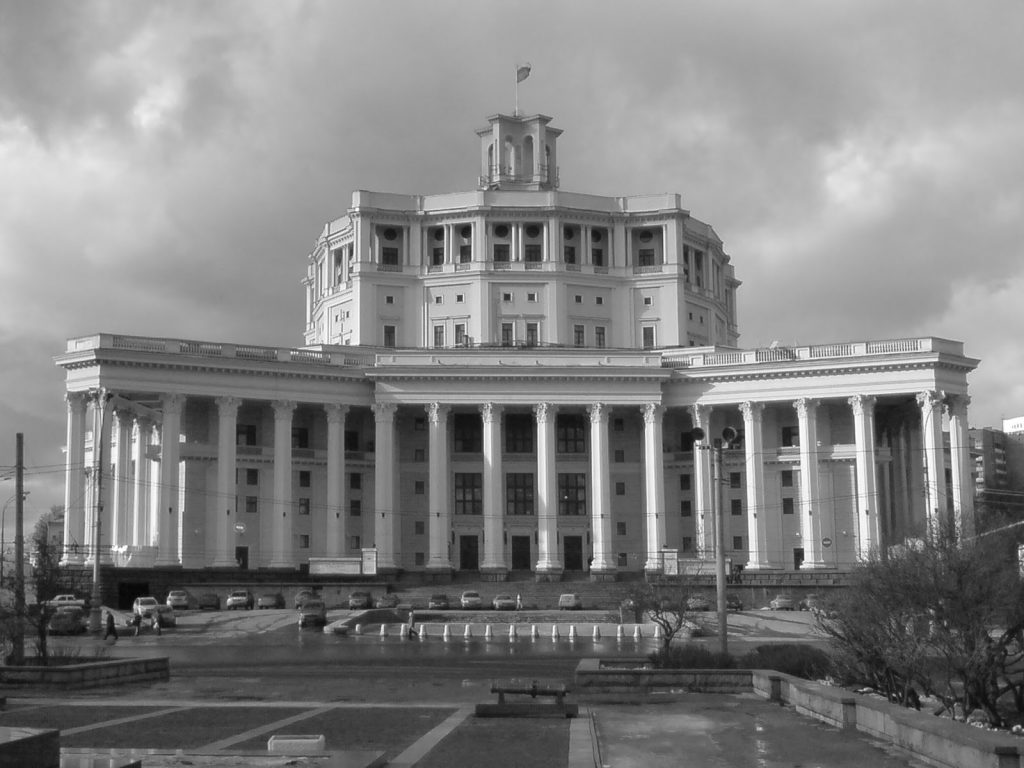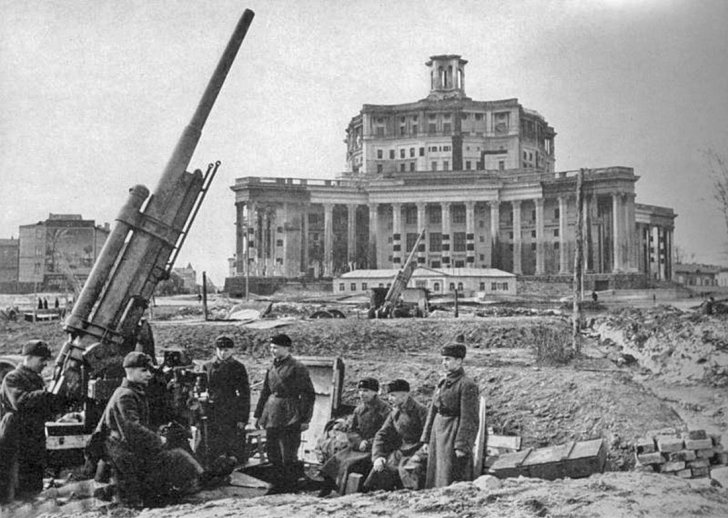“The representative buildings of Stalinist architecture — the wedding-cake skyscrapers of the “Seven Sisters” in Moscow, for instance — were far more monstrous than any of the traditionalist amalgams that preceded them. These colossal structures featured Dorian columns and towering heroic statuary cast in ferroconcrete. (Paperny even speculates that Stalin personally intervened in designing the infamous proposal for the Palace of the Soviets. He cites an argument recently advanced by the architectural historian Dmitrii Khmelnitskii, which holds that no trained architect could have produced such an abomination. Khmelnitskii suggests the official authors credited would have been incapable of “such powerful barbarism, such neophyte courage in dealing with form, function, and surface”).”
“Los edificios representativos de la arquitectura Stalinista – Los rascacielos-tarta de las “Siete Hermanas” en Moscú por ejemplo – fueron más monstruosos que ningún otro amalgama tradicionalista anterior. Estas colosales estructuras eran caracterizadas con columnas dóricas y heroicos torreones y estatuas en hormigón y metal. (Paperny incluso especuló que Stalin personalmente intervino en el diseño del tristemente famoso proyecto para el Palacio de los Soviets. Cita el argumento del historiador Dmitrii Khmelnitskii, el cual sostiene que ningún arquitecto con formación podría haber realizado tal abominación. Khmelnitskii sugiere que el autor oficial del proyecto habría sido incapaz de “tal poderosa barbarie con un coraje neófito en el trato de la forma, la función y la superficie”).”
Wolf, Ross (2013, June,29) Stalinism in art and architecture, or, thefirst postmodern style.[The Charnel House].

The resolution for the competition for the Palace of the Soviets in 1933 in Moscow finished with soviet avant-garde of the XX Century and started a new neoclassical style. It would be known as Stalinist Architecture where monumental projects would be built with direct analogies to the Soviet Union. The Russian Army Theater had a capacity of 1900 seats and its floor plan has a star geometry as a reference to the red Soviet Star.
La resolución del concurso del palacio de los Soviets en 1933 en Moscú terminó con las vanguardias soviéticas de principios del Siglo XX e instauró un nuevo estilo neoclásico que se conocería como periodo o arquitectura Stalinista de donde salieron grandes proyectos monumentales con analogías directas a la Unión soviética. El Teatro de la Armada Rusa, con unos 1900 asientos, particularmente tiene una planta en forma de estrella que recuerda a la estrella roja soviética.





